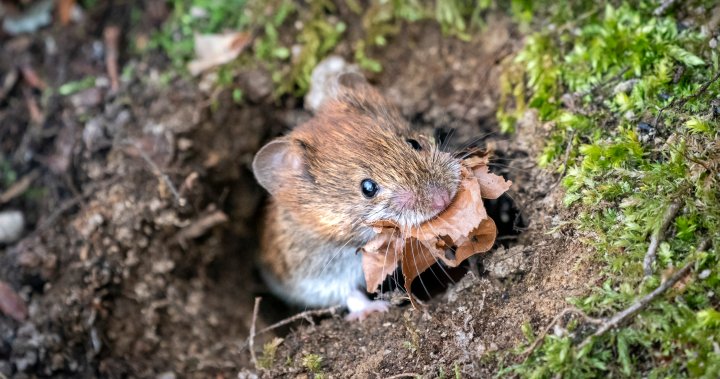Alaskapox, a virus first identified in 2015, has recently claimed the life of an elderly Alaskan man, marking the first known human fatality linked with this pathogen, according to officials.
The man, from the Kenai Peninsula (just south of Anchorage), was hospitalized in November due to a worsening infection that impacted the range of motion in his arm, Alaskan public health officials stated on Feb. 9. He then tested positive for Alaskapox (also known as AKPV) and died in January.
The man was undergoing cancer treatment and had a suppressed immune system because of the drugs, which may have contributed to the severity of his illness, officials said. He was described as elderly but an age wasn’t given.

“With Alaskapox, it was first described in 2015 as new, and since then there have been seven reported cases,” infectious diseases specialist Dr. Isaac Bogoch told Global News. “Most of the cases were around the Fairbanks, Alaska region, but it’s likely much more widespread. This is probably going to be one of those things where the more you look for it, the more you’re going to find it.”
Alaskapox, part of the orthopoxvirus family, is known to afflict both animals and humans with disease. This virus family also includes illnesses like smallpox and mpox, Bogoch said.
“These viruses occur all over the world and they typically live in rodent populations,” Bogoch said. “Once in a while, they can move from the rodent population either to other non-human animals or from rodent populations to humans, or from rodent populations to non-human animals to humans.“
Where did Alaskapox originate?
Alaskapox was first identified in an adult living near Fairbanks, Alaska, in 2015, according to health officials.
To date, there have been seven reported Alaskapox infections. And until the recent fatal case, all infections occurred in residents of the Fairbanks area and involved a localized rash and the swelling of lymph nodes, health officials stated.
Testing was done on small mammals in the area, and officials identified Alaskapox infection in four distinct species, with red-backed voles emerging as a significant presence among them.
Get the latest Health IQ news.
Sent to your email, every week.
There also has been evidence suggesting that prior AKPV infection has also been documented in at least one domestic pet linked to a patient, officials added.
What happens when you get infected?
Symptoms of Alaskapox and other viruses in this family can include a rash, swollen lymph nodes and joint or muscle pain.
Dr. Zain Chagla, infectious disease physician and associate professor at McMaster University in Hamilton, Ont., noted that in the seven cases in Alaska, the lesions resemble pox-like sores akin to those observed in smallpox and mpox. These lesions typically start as blisters, which then rupture and ulcerate, forming large scabs before eventually healing, he said.
In the latest case, he explained that due to the man’s immunocompromised state, the development of widespread lesions proved fatal despite efforts to treat the infection.
“It is now described for the first time that it leads to serious complications in very immunocompromised individuals,” he said.
It’s unclear how AKPV is transmitted but researchers say it may be zoonotic, meaning it can jump from animals to humans.
In the most recent case, health officials reported that the elderly man lived alone in a forested area and had not travelled recently. However, he mentioned caring for a stray cat that often hunted small mammals and scratched him frequently. While the patient had no other recent contact with small mammals, he did report gardening in his backyard until September 2023.
The stray cat underwent testing and the results were submitted to the U.S. Centers for Disease Control and Prevention (CDC). But all tests returned negative results.

“The first six individuals, and even a little bit of the seventh individual, had some exposure to small animals in the environment. Some of them through direct hunting, some of them through their pets that hunted other animals,” Chagla said.
“And so potentially there may be a mechanism to spread that way through, dead and decaying animal matter where people may come into contact with and then contract it through the skin.”
Chagla noted that in a few of the Alaskapox cases, some family members showed evidence of exposure to the viruses, suggesting that certain populations may experience minimal symptoms or none at all.
‘Expansion of zoonotic infections’
While Bogosh emphasized that Alaskapox currently doesn’t present a major threat to large populations, he cautioned this still highlights the broader concern of zoonotic diseases crossing into human populations.
“Are they on the rise? Yes, we’re seeing the expansion of zoonotic infections. We’re also discussing it a lot more since COVID-19 because it’s front and center on many people’s minds. But this has been an issue that’s been brewing for decades,” he said.
“We have to take these seriously. We have a lot of interactions between humans and animals and some of these can cause epidemics, some of these infections have pandemic potential.”
For example, Bogoch referenced H1N1, which triggered a worldwide pandemic in 2009, underscoring the capacity of zoonotic infections to swiftly propagate and affect widespread human populations.

H1N1, also known as the swine flu, originated from pigs and spread to humans. The virus spread rapidly, and is estimated to have infected between 700 million and 1.4 billion people worldwide during its first year of circulation, resulting in approximately 151,700 to 575,400 deaths, according to the CDC.
Bogoch believes that whether it’s mpox, swine flu, avian flu, or Alaskapox, the phenomenon of viruses spilling over to humans will persist.
“A lot of this is related to urbanization, destruction of habitat, humans coming into contact with non-human animals either through hunting or wildlife trade, pets or farming and agriculture,” he warned.
And since zoonotic infections have no borders, Bogoch said “there will very likely be more cases of this in the future.”
— with files from the Associated Press




